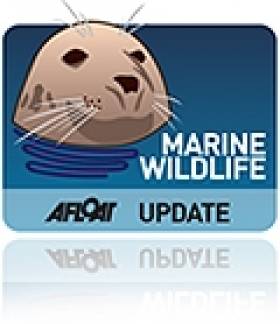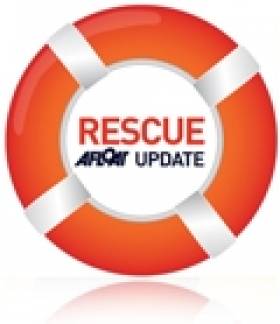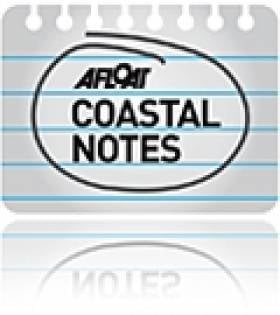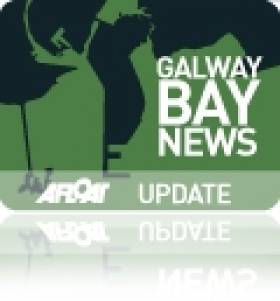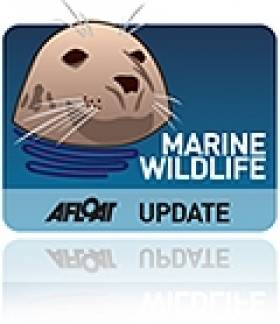Displaying items by tag: video
Video Captures Drone's-Eye View Of Wild Atlantic Way
#CoastalNotes - Via TheJournal.ie, check out this breathtaking video by photographer Peter Cox, who mounted a camera to a remote operated drone to capture stunning coastal vistas on the Wild Atlantic Way.
Using little more than consumer-level tech, Cox was able to film incredible aerial shots of the kind previously only available those with big budgets on expensive helicopter shoots.
But he says his experiments have not been without their crashing failures, including one potentially disastrous moment when an engine tore off his drone at Loop Head.
TheJournal.ie has more on the story HERE.
Interactive Video Sheds More Light On Humpback Whale Mystery
#MarineWildlife - The mysteries of Ireland's humpback whales have got the 'TouchCast' treatment as part of RTÉ's new interactive storytelling format.
As previously reported on Afloat.ie, scientists have recently tracked first the firm time ever whales travelling between popular spots on the Irish coast like Hook Head and feeding grounds thousands of miles way in the Arctic.
Now you can learn more about this new research in Philip Bromwell's TouchCast report, including cetacean experts' surprise at finding no matches between Irish whale and the popular breeding grounds in the mid Atlantic and the West Indies.
Another RTÉ TouchCast report worth watching pays a visit to the studios of Cartoon Saloon, nominated for an Oscar for their animated feature Song of the Sea that takes its inspiration from Irish maritime folklore.
Video Shows Shocking Moment As Aran Islands Trawler Disappears Under Scottish Waves
#Rescue - Mail Online has more on the dramatic rescue of Aran Islands fishermen from an Irish trawler that sank off Scotland's Outer Hebrides last week.
As previously reported on Afloat.ie, three of the five crew were airlifted to hospital with suspected hypothermia after the Iúda Naofa began taking on water some 48 miles off Lewis in the far north-west of Scotland.
But new video from HM Coastguard shows the shocking moment as the crew escaped their trawler just before it disappeared beneath the waves in a mere 35 seconds.
Minutes beforehand, coastguard crew members had attempted to clear the water from the boat with a salvage pump but the vessel was quickly overwhelmed.
Micheál Ó Conghaíle, a deckhand on the boat skippered by his father Mairtín, describes how what was a normal fishing expedition went south after the rough waters "got the better" of their pumps.
Yet he and the rest of the crew are thankful for getting out relatively unscathed just weeks after the loss of eight crew on a cargo ship in the Pentland Firth.
Mail Online has much more on the story HERE.
Wicklow Aerial Video Captures Garden Coastline & Stunning Sea Views
#wicklow – No surprise that this County Wicklow from the air vid features the Garden County's stunning coastline but Skycam Ireland's crisp footage via drone goes so much further to capture incredible coastal scenery right on the Capital's doorstep.
There is spectacular views of rolling green hills and a weather-beaten rocky coastline. There's castles and towers stationed on every headland, giving you the feeling of flying through a scene from 'Lord of the Rings'.
Nearby Dublin Bay sailors will instantly recognise familiar landmarks including Wicklow Head, its prominent lighthouses and Wicklow harbour itself, the home of the Round Ireland yacht race. The four–minute video includes coastal scenes of Killiney Bay and Bray Head and shots over water along an historically important stretch of Kilcoole beach.
There are many more water-based shots featured too including Wickow's amazing lakes, waterfalls and watch out for the cute seal!
We hope Skycam are planning a 2015 verison, if so Afloat.ie recommends a flight over Greystones Harbour and Marina to capture the country's newest coastal marina facility.
Kinsale Yacht Club Vid Shows off Winter Beauty of Cork Coastal Town
#kinsale – American travel bloggers, Monique Davis and Drake Roberts (DrakeParagon), who are living on their boat on Kinsale Yacht Club Marina for the next few months, made this short video over the past few days with clear skies and good weather conditions showing off the south coast town to be the beautiful and special place.
'Weather Bomb' Brings Record-Challenging Big Waves, Top Surfers To Nazaré
#Surfing - This is no computer simulation: it's a very real, very large wall of water being surfed by an actual human off Portugal this past Thursday 11 December.
With a poor wind direction putting paid to any attempts to ride big swells crashing in on Ireland's northwest with the recent 'weather bomb', the world's top big wave surfers - including a number of Mullagmore regulars like Andrew Cotton - turned their attentions to Nazaré, site of 2012's record-breaking monster.
And as Magic Seaweed reports, they weren't disappointed, with former Billabong Big Wave Tow-In champion Eric Rebiere calling Thursday's massive rampart "for sure the largest waves I've seen".
Of course, big waves of this exceptional kind are a regular occurrence at this Portuguese hot spot, as this recent photo gallery from the Guardian demonstrates.
Wheelchair Diver Glides Under The Sea
#Diving - Outsider Magazine points us to this breathtaking video of a wheelchair user exploring the wonders under the sea thanks to her special underwater chair.
Sue Austin developed the concept in 2005 while training as a disabled diver, she wrote for the Guardian last year.
It was simply a matter of connecting SCUBA gear to a basic NHS wheelchair with electric propulsion that allows her to explore the undersea world just like any other diver, perhaps even more gracefully.
And Austin's bright idea fed into her contribution to art project that aims to reshape preconceptions about wheelchair users and others with 'limited' mobility.
The Guardian has much more on the story HERE.
Weather Bomb Causes 'Reverse Waterfall' At Doolin
#WildAtlanticWay - Check out this video shot by Eoin O'Hagan for Clare Virtually that shows the intense results of the first winter storm of the year at Doolin in Co Clare.
Indeed, the winds from the so-called 'weather bomb' were so strong at that stretch of the Wild Atlantic Way that they blew the sea spray up and over the cliffs in a reverse waterfall!
Take A Video Tour Of Galway From City To Coast
#Galway - Care of the Daily Edge, here's a special treat for any fans or residents of the City of the Tribes.
Búlabosca Film's short video 'This is Galway' showcases the varied sights and experiences from city to coast and beyond.
Stunning seaside vistas, world-class angling and watersports, delicious fresh seafood – they're all celebrated here, and with good reason.
Irish Air Corps Captures Video Of Breaching Fin Whale
#MarineWildlife - Check out this wonderful video captured by the Irish Air Corps earlier this week featuring the uncommon sight of a fin whale breaching some 150 miles off Mizen Head in West Cork.
Fin whales, the second largest of the ocean's creatures after the giant blue whale, are a regular sight in Irish waters but are rarely seen breaching here.
According to the Irish Whale and Dolphin Group (IWDG): "The diagnostic white right lower jaw and tall blow confirms this to be a fin whale, although breaching is a behaviour typically associated with other species such as humpback and minke whales.
"There is however evidence that fin whales in the Mediterranean do breach occasionally, so it remains a mystery as to why this behaviour has never before been recorded here."



























